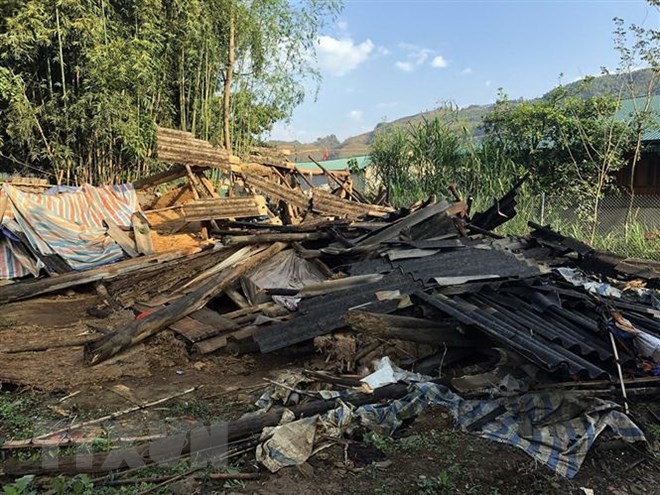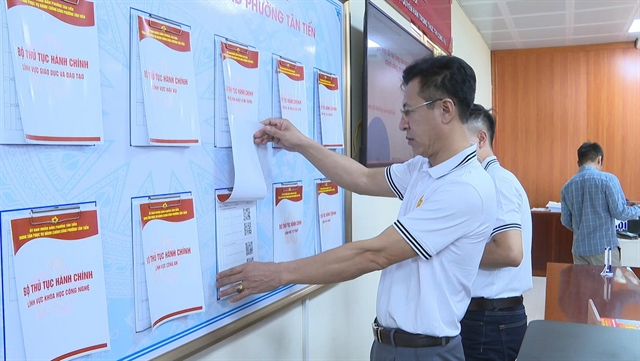 Society
Society

Thunderstorms and hail occur from March to May annually, when the weather changes from cold to hot and from the dry season to the rainy season, a weather expert said. However, the appearance of hail in mid-February is a sign that dangerous whether phenomena are more likely this year.
 |
| A house in Điện Biên Province’s Tủa Chùa District that collapsed last weekend due to thunderstorms and hail. - VNA/VNS Photo |
HÀ NỘI — Thunderstorms and hail occur from March to May annually, when the weather changes from cold to hot and from the dry season to the rainy season, a weather expert said. However, the appearance of hail in mid-February is a sign that dangerous weather phenomena are more likely this year.
Trần Quang Năng, chief of the Weather Forecasting Department under the National Centre for Hydro-Meteorological Forecasting, explained the cause of thunderstorms and hail in the northern mountainous region over the weekend and predicted upcoming weather trends, reported vietnamplus.vn online newspaper.
Thunderstorms, tornadoes, strong winds and hail occurred in the northern mountainous region on Saturday and Sunday, especially in Mù Cang Chải (Yên Bái Province), Sa Pa, Lào Cai and Bát Xát District (Lào Cai Province), as well as some areas in Sơn La and Thái Nguyên provinces.
The National Committee of Disaster Prevention, Search and Rescue reported late on Monday that hail and whirlwinds in the region killed one person and injured three others over the weekend. Damage to private property, crops, livestock and public buildings was estimated to cost VNĐ26 billion (US$1.1 million) in total.
Năng said the storms were caused by a low pressure groove being pushed southward by cold air from the north, combined with recent high temperatures in the northern provinces and high levels of humidity.
The early appearance of hail this year indicates the thunderstorm season will have more dangerous weather phenomena such as tornadoes.
In addition, the temperature in recent months was higher than the average level from previous years, making the weather and natural disasters harder to predict, said Năng.
In order to proactively cope with the upcoming dangerous weather, people and local authorities should pay close attention to the forecasts and any warnings from authorities.
On the basis of forecasts and warning information, local agencies should prepare response teams, production plans and travel arrangements.
The concerned agencies continued to promote information and dissemination of meteorological and hydrological knowledge and of natural disaster preventive methods to each family and the whole community.
The National Centre for Hydro-Meteorological Forecasting, in co-ordination with provincial weather departments and the media, has regularly updated warnings and storm guidelines. — VNS




